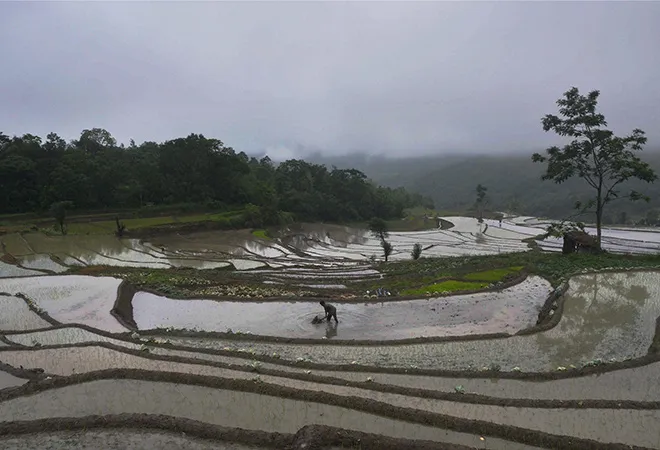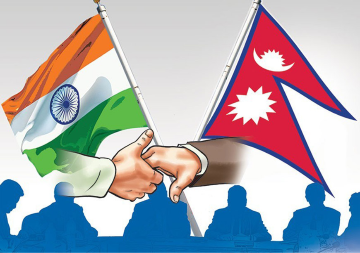
Politically, loan waivers have been an important tool for winning elections and the Congress government used it quite a few times in the past. But apart from its political significance, UP chief minister Yogi Aditya Nath may be bringing relief to a large number of farmers in dire straits. The loan waiver for 1.5 crore small and marginal farmers of ₹36,359 crore is the biggest ever for any state. The amount of waiver for each individual is ₹1 lakh, but it includes all loans from any bank, including cooperative banks. Loans taken against paddy, wheat, fertilisers and insecticides are eligible for waiver under the scheme, but not loans for consumption purposes. Only those loans taken before 31 March 2016 will be considered.
Already the RBI chief and the SBI chairman have expressed dissatisfaction. There is a mounting debt problem with state owned banks and this kind of populist gesture will accentuate it. Nevertheless, on humanitarian grounds and giving due importance to the growers of India's food, one could justify it.
People are talking about moral hazard by which they mean that farmers in anticipation of such loan waivers will keep borrowing more and more in the future. But this is to assume that farmers are irresponsible people who are indifferent towards their own wellbeing because any debt incurred by any individual except the very rich, seems a burden. Farmers do pay back loans and the track record of loan recovery is better than loan recovery from absconding industrialists who owe the public sector banks a staggering amount of ₹7 lakh crore. Then why are people so worried about farmers going on a borrowing spree and not paying back loans?
The problems in agriculture in Uttar Pradesh and in other states are deep rooted with excessive dependence of the rural population on agriculture and the lack of irrigation reforms.
Since British times, the big problem of rural indebtedness has remained unresolved. The number of farmer suicides has only increased in the last few years despite the priority sector concessional lending by public sector banks to the rural sector.
Farmers have to borrow against their crops to meet their capital expenditures but more often than not, they borrow for consumption purposes. Most borrow from moneylenders whose loans given against jewellery, cattle, land, are usurious but till now, no way has been found by which the hold of moneylenders on farmers can be reduced.
This is confirmed by the NSSO survey that reveal that less than half of the small and marginal farmers in UP owe money to banks. There are 1.7 crore farmers in UP and among farmers with less than one acre of land, just 28 percent borrowed from banks and the remaining 72 percent borrowed from non-formal sources, mainly money lenders. For farmers holding one to five acres, the share of those borrowing from banks was 67 percent. As in the past, bigger farmers will benefit from the UP loan waiver scheme rather than the small and marginal ones.
The blame for the rise in rural indebtedness can go, firstly, to the erratic behaviour of monsoons — if they fail, farmers are doomed. The irrigation network and water conservation measures are not adequate to prevent crop failure in any state. Thus the first priority of the central government is to provide better irrigation and hence more investment is needed. According to Budget 2017, ₹20,000 crore has been provided to NABARD towards the long term irrigation fund and ₹5,000 crore for setting up a dedicated micro irrigation fund. But as to when there will be actual implementation on the ground is another matter.
UP and Tamil Nadu for example need better micro-irrigation like water harvesting and watershed development. According to CMIE, the irrigated area in UP has come down from 14.49 million hectares in 2001 to 13.43 hectares in 2010-11. Better fertilisers and seeds are also important for crops, but water is the main ingredient for crop survival. Farmers in states with less irrigation facilities available have resorted to tube well irrigation which has led to ground water depletion.
Another problem is disbursal of rural credit. Various reforms have been introduced like the Kisan card and more banking facilities in remote areas. Budget 2017 provides for disbursal of ₹10 trillion of farm credit. Since farmers are reluctant to approach banks, post payments banks should spread to more rural areas. The first such banks have been opened in Jharkhand and Chattisgarh and hopefully 1.55 lakh post office branches will be linked with them later this year. Other types of microcredit institutions are also helpful but when in need of a big loan farmers invariably seek out the moneylender.
The government has to prioritise another Green Revolution, otherwise the state of agriculture will not improve.
Heavy investments have to be made on rural infrastructure to create more non-farm jobs in food processing units and small industries to absorb the rural youth who are not keen to remain in agriculture. The problem in UP as well in other states is the slow growth of non-farm sector jobs. The livestock sector has emerged as an important source of non-farm income in many parts of UP which has become the biggest buffalo meat exporter but now with the controversy surrounding slaughter houses, there may be a setback.
More IT use and futures trading via Electronic National Agriculture market will enable farmers to market their produce efficiently and earn better prices. This can enhance their savings, reduce indebtedness and increase investment for improving productivity.
UP being the second most indebted state with state debt of ₹327, 470 crore will obviously have a bigger budget deficit after the loan waiver which is risky for any chief minister. The Chief Minister has organised the launching of Rahat bonds for funding the loan waiver and appointed an 8-member committee to formulate the scheme. With the current rate of interest between 6.5 to 7.5 percent, there would be a huge interest burden to bear on the bonds of around ₹2, 726.8 crore annually. There may be a bailout from the centre.
One hopes that by reducing corruption and raising administrative efficiency, he will be able to manage the fiscal front better. In any case, waiving loans can only bring temporary relief.
The views expressed above belong to the author(s). ORF research and analyses now available on Telegram! Click here to access our curated content — blogs, longforms and interviews.




 PREV
PREV


